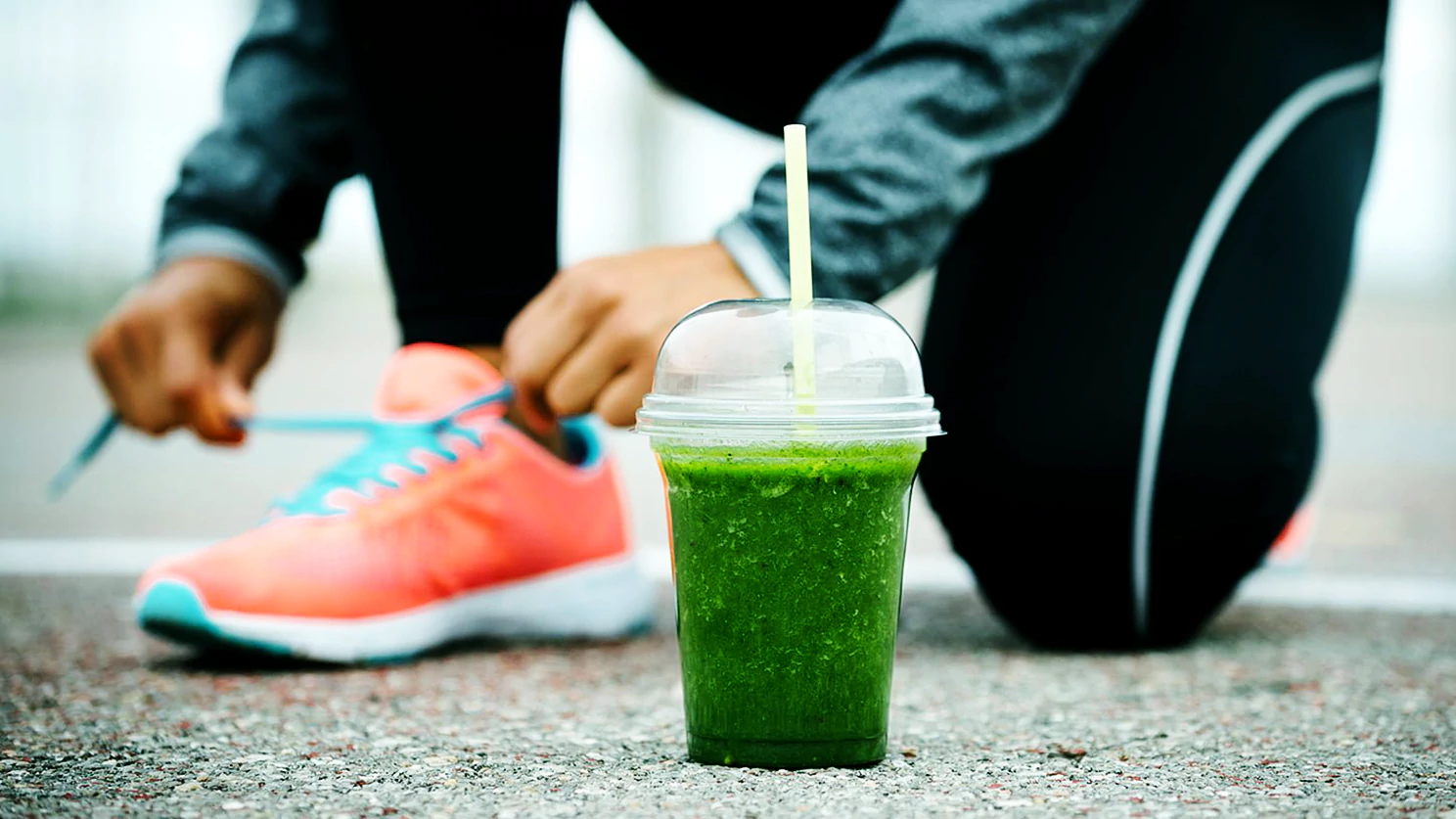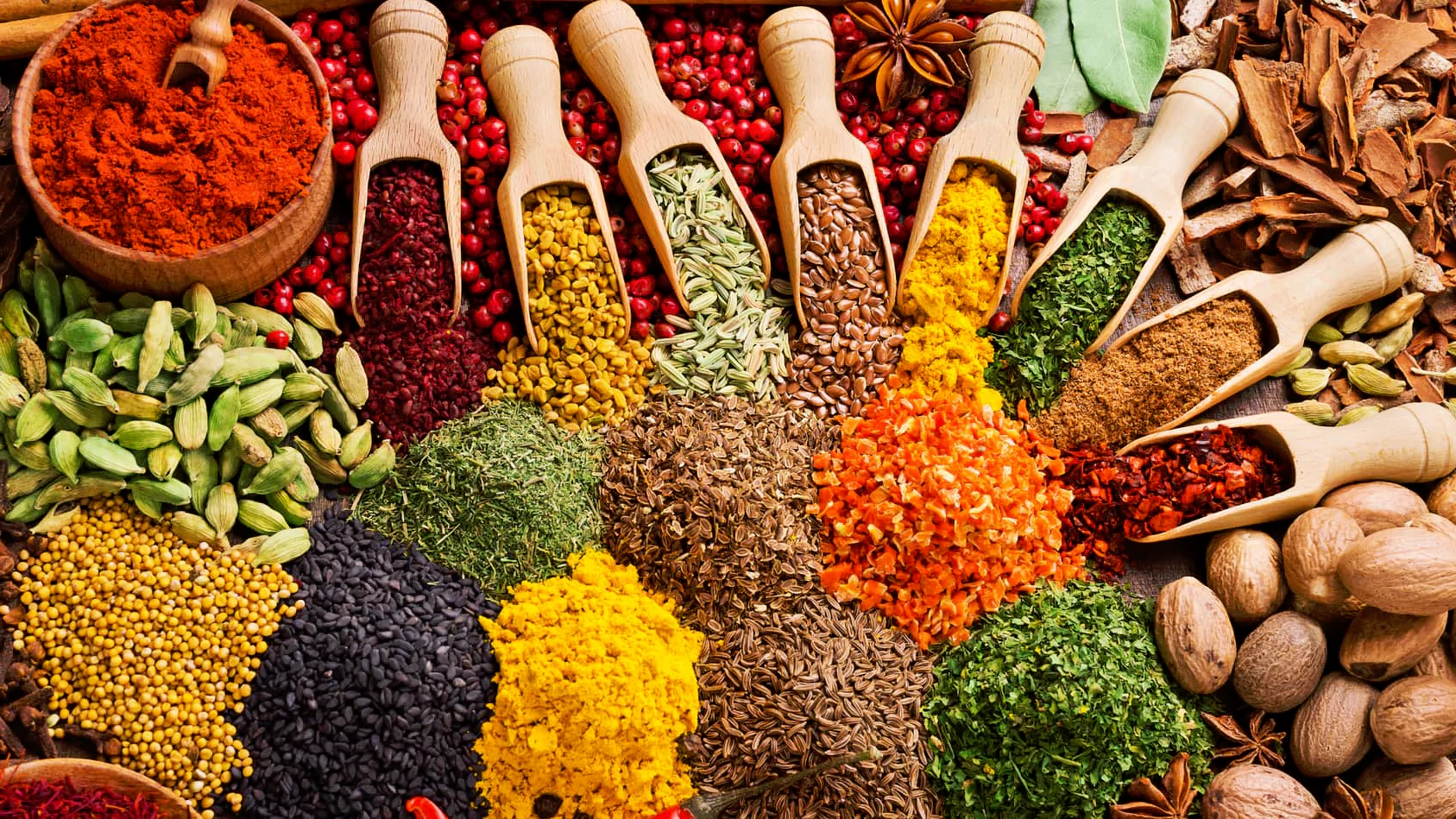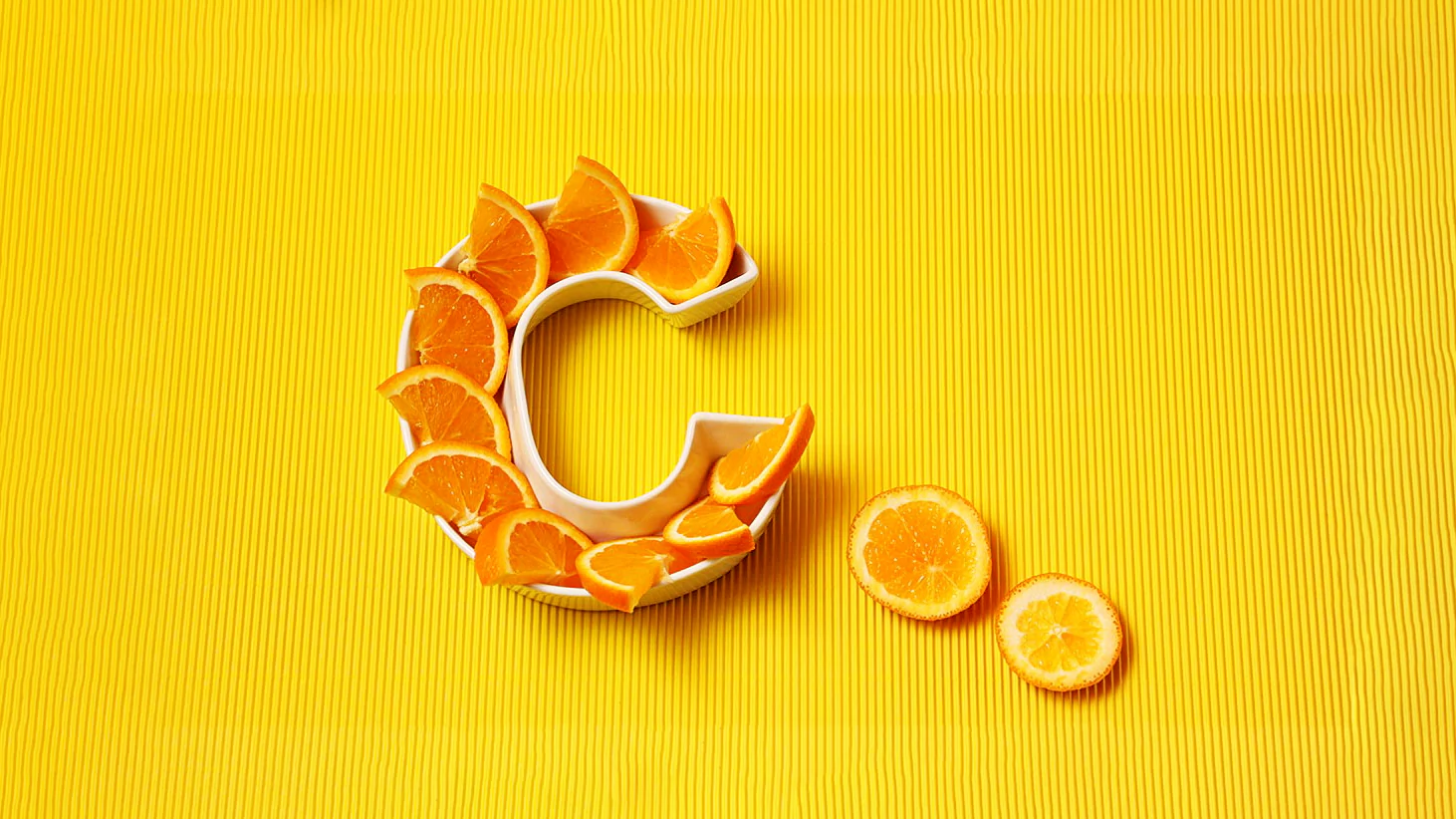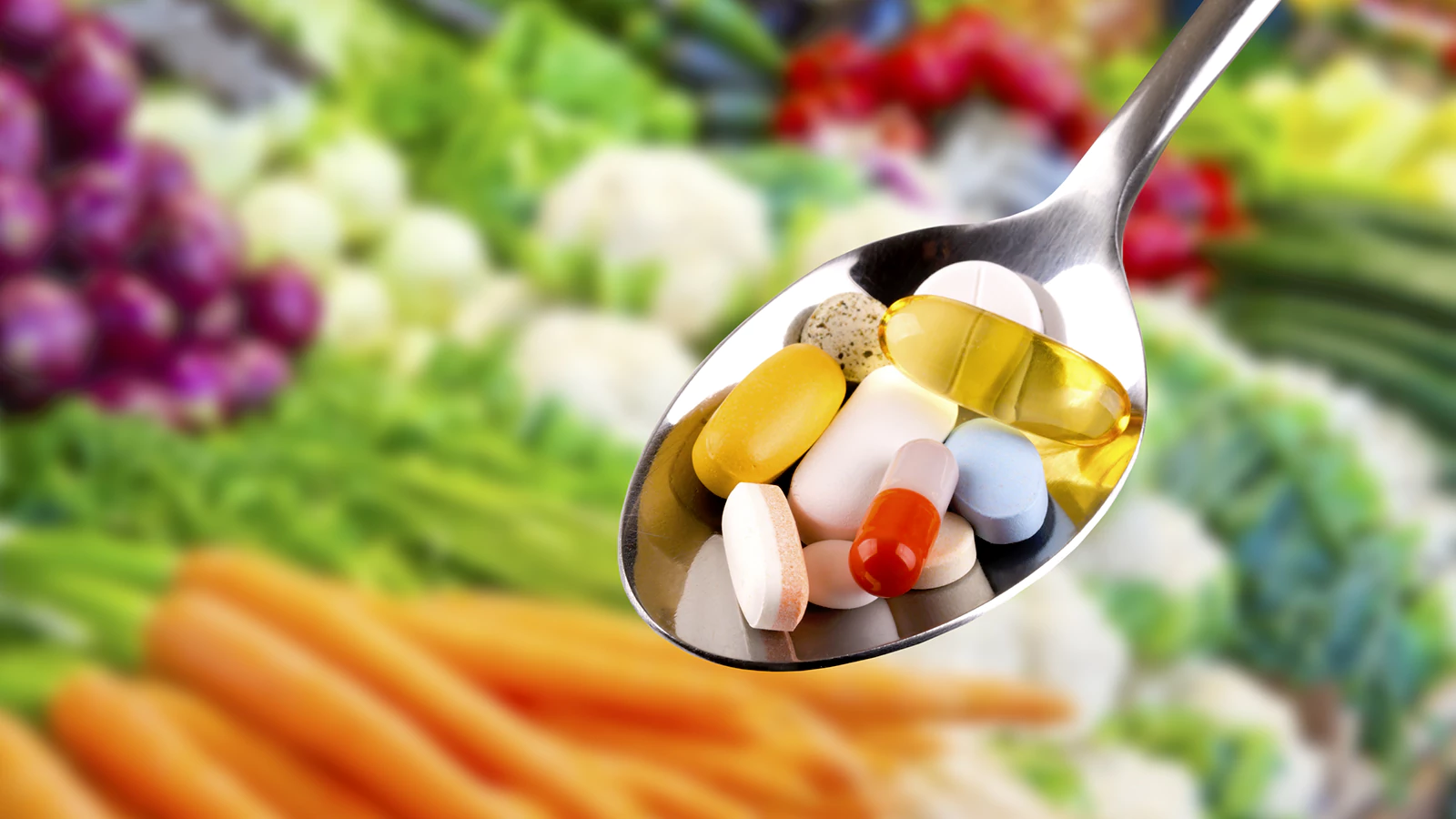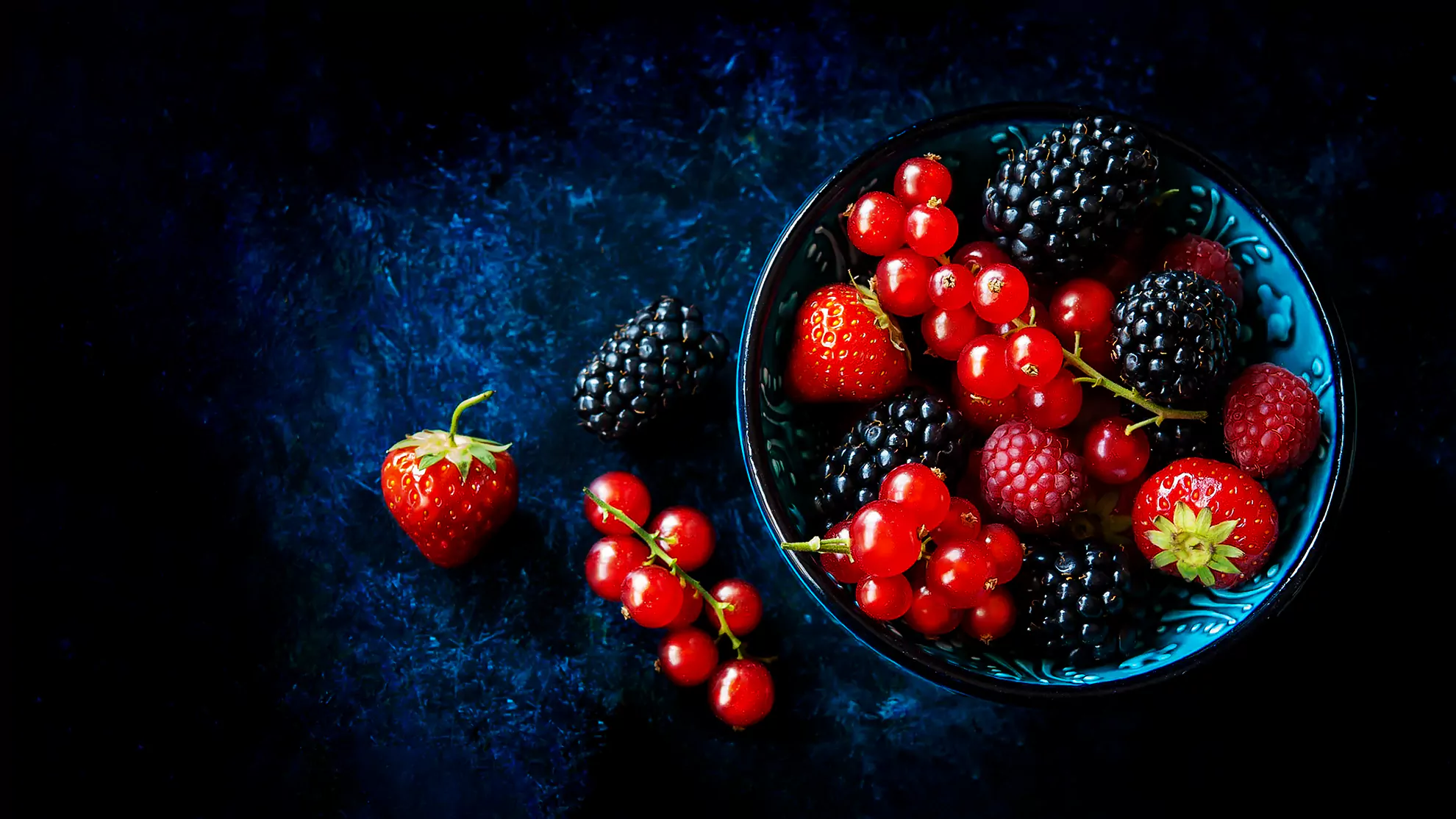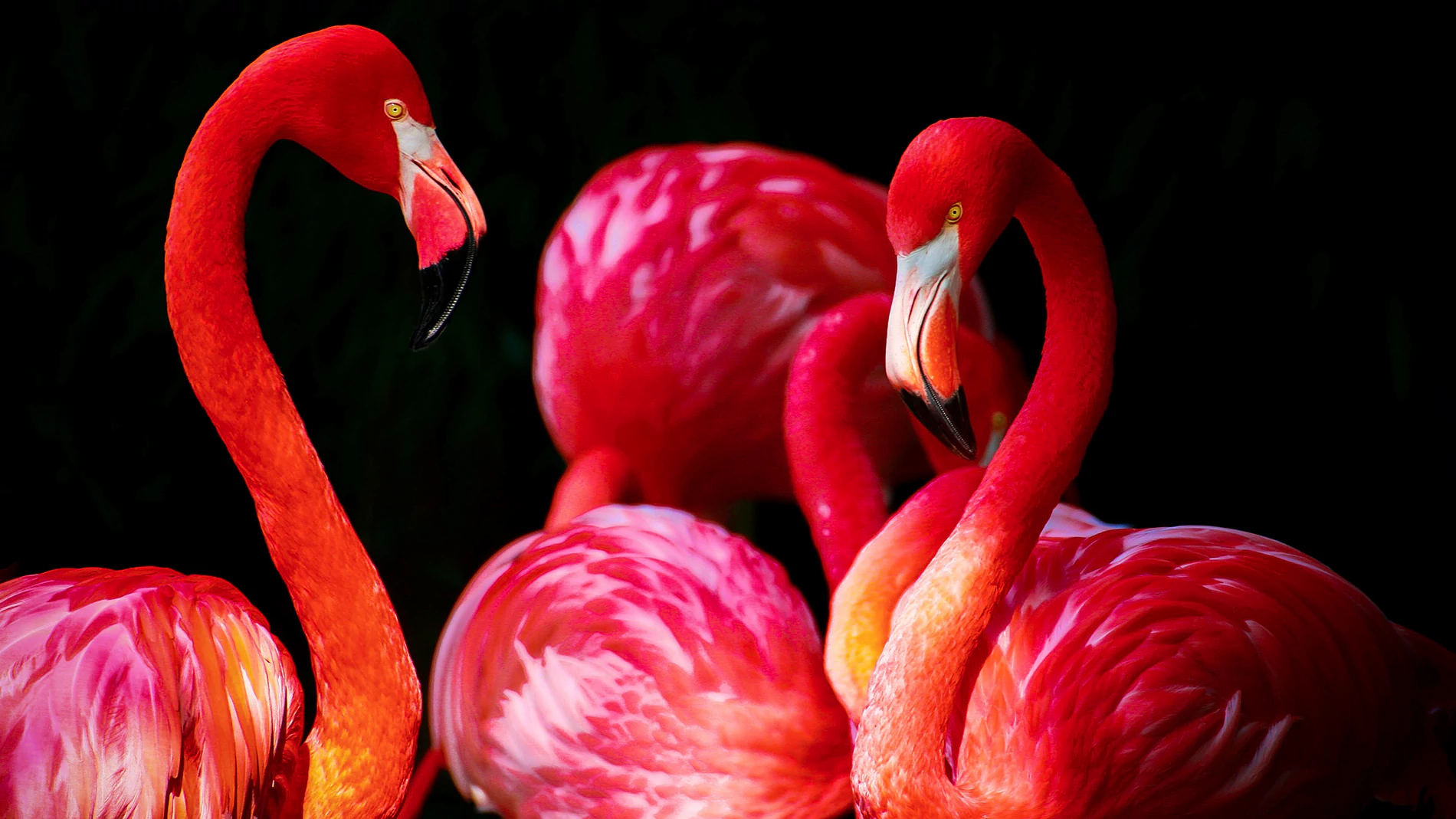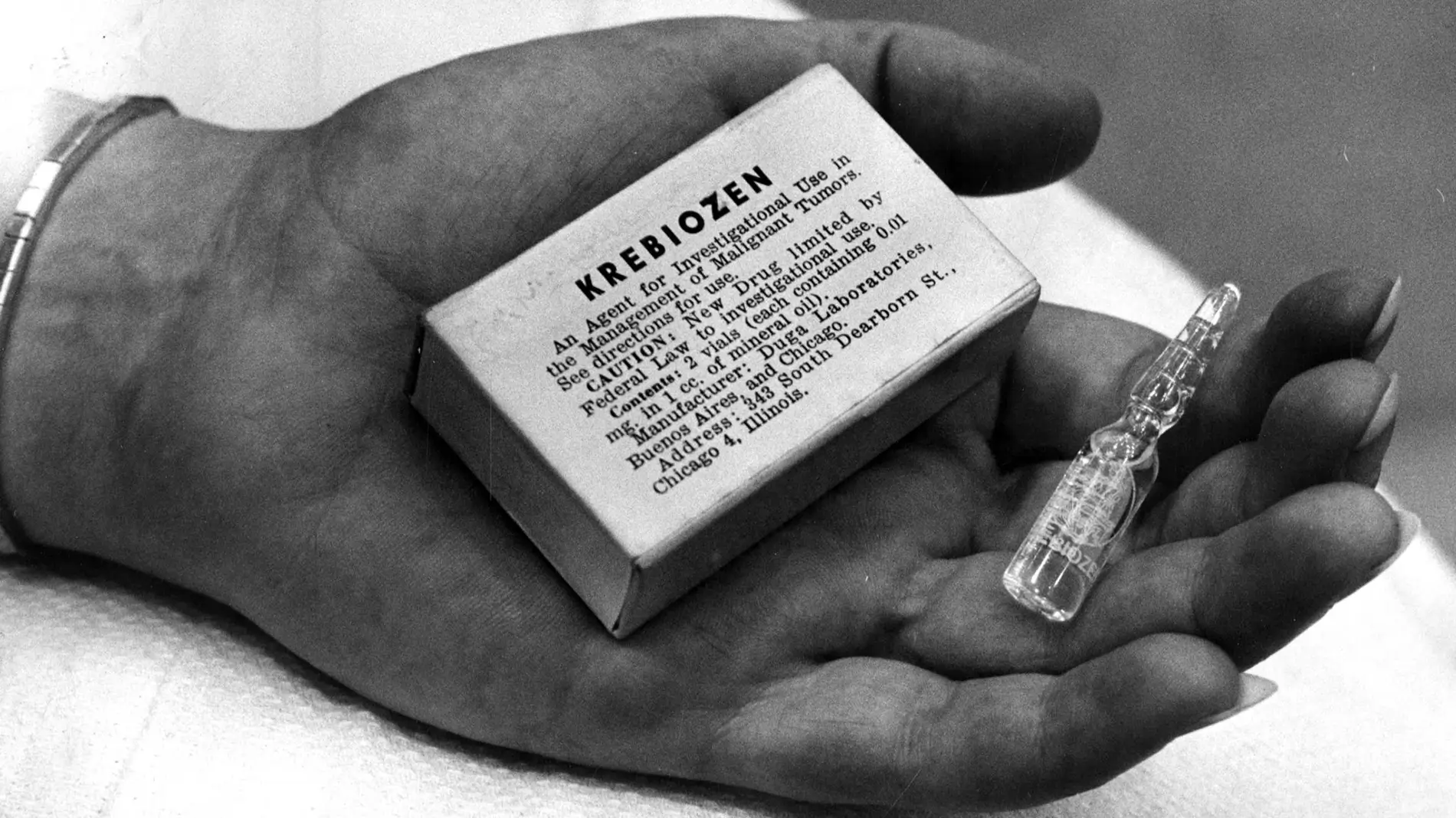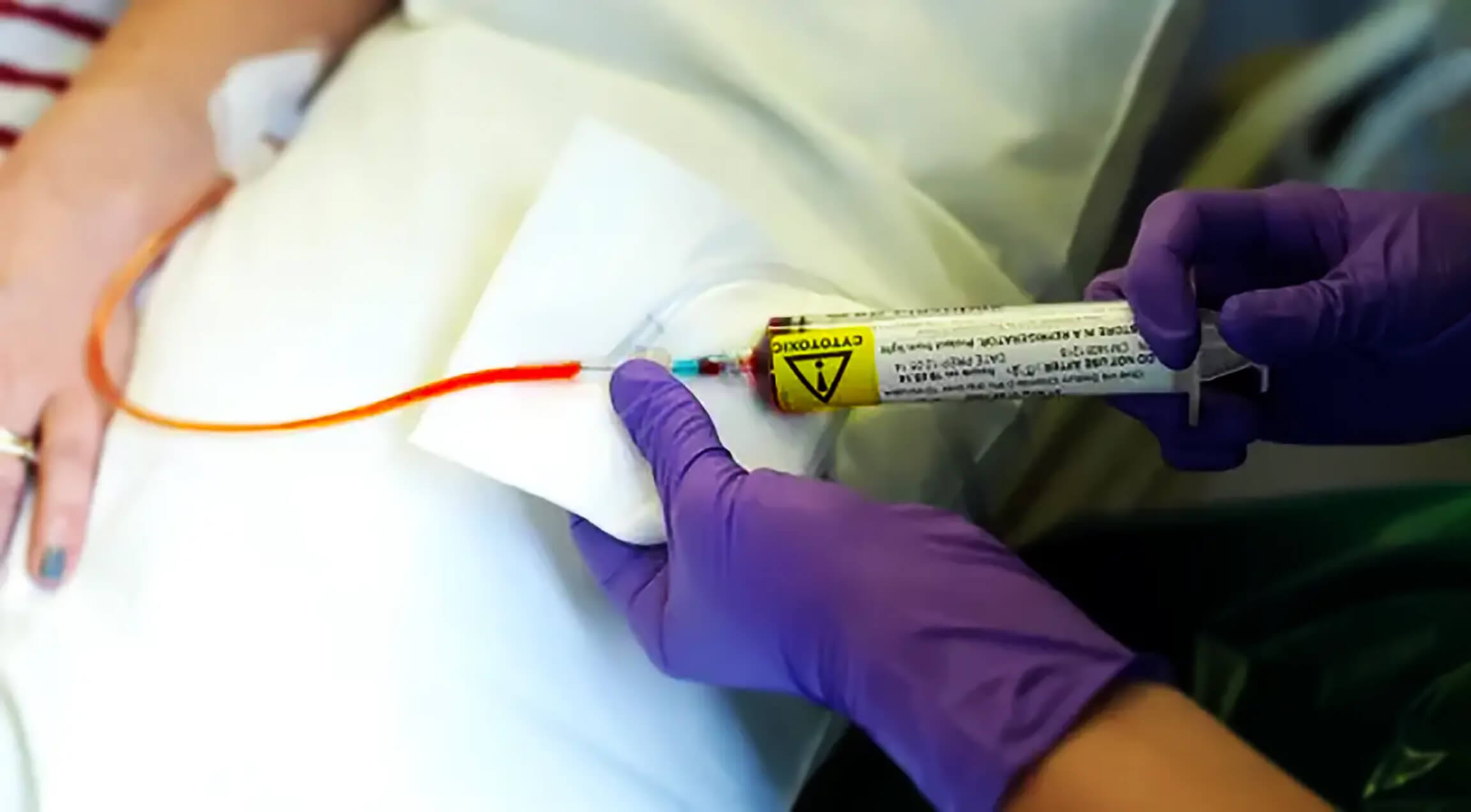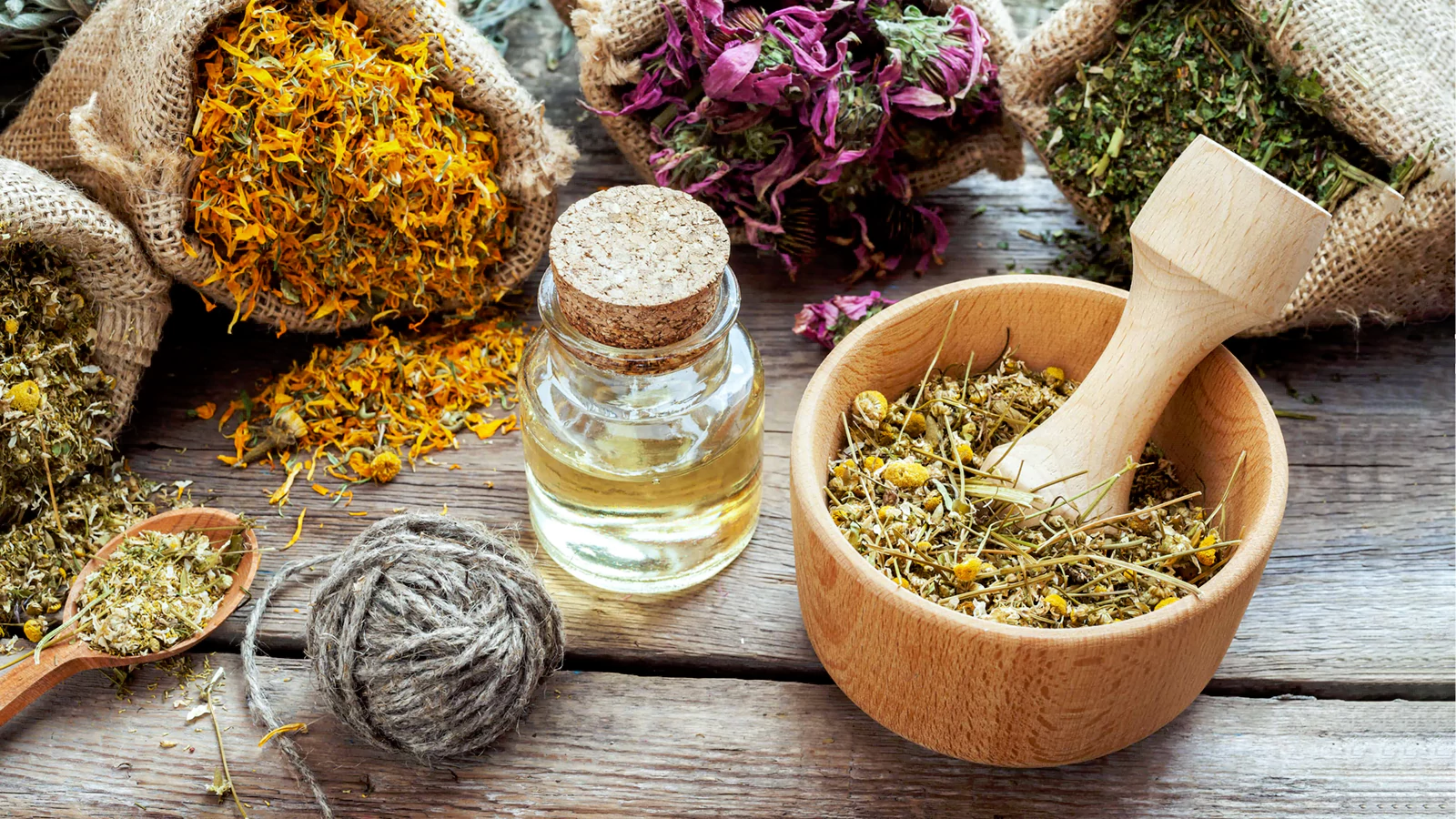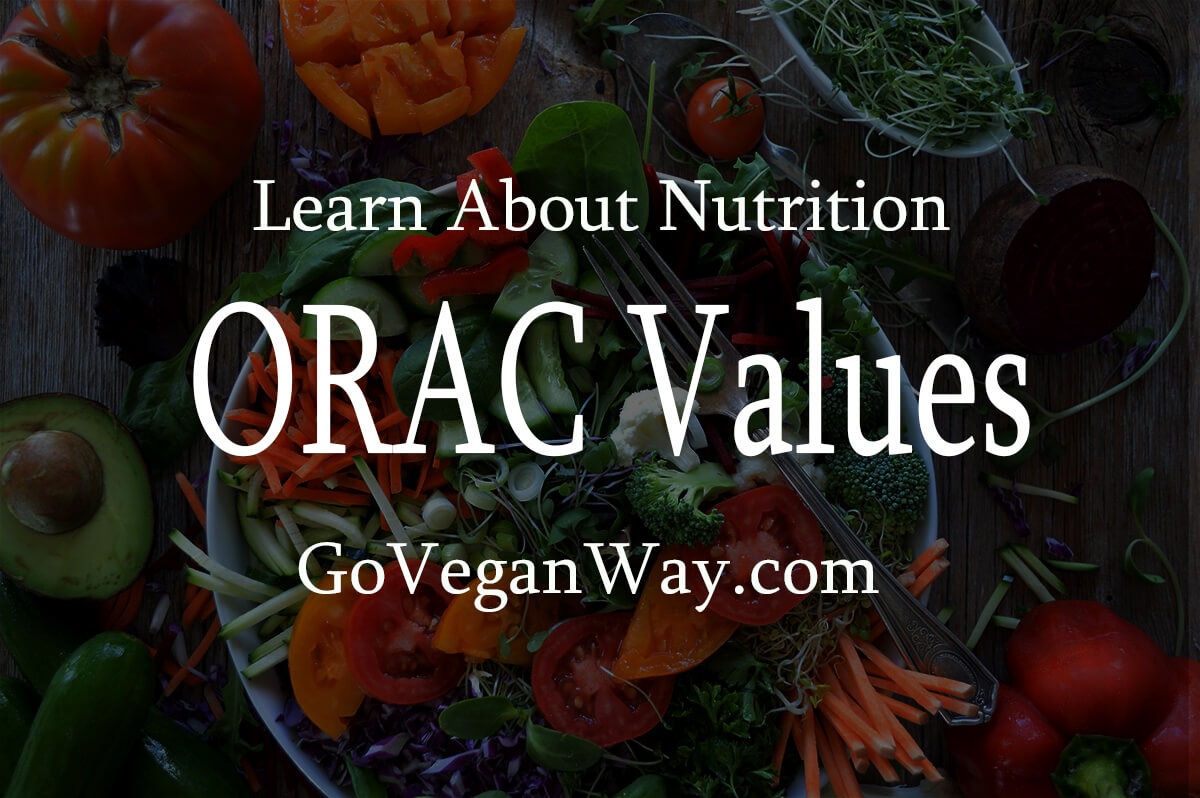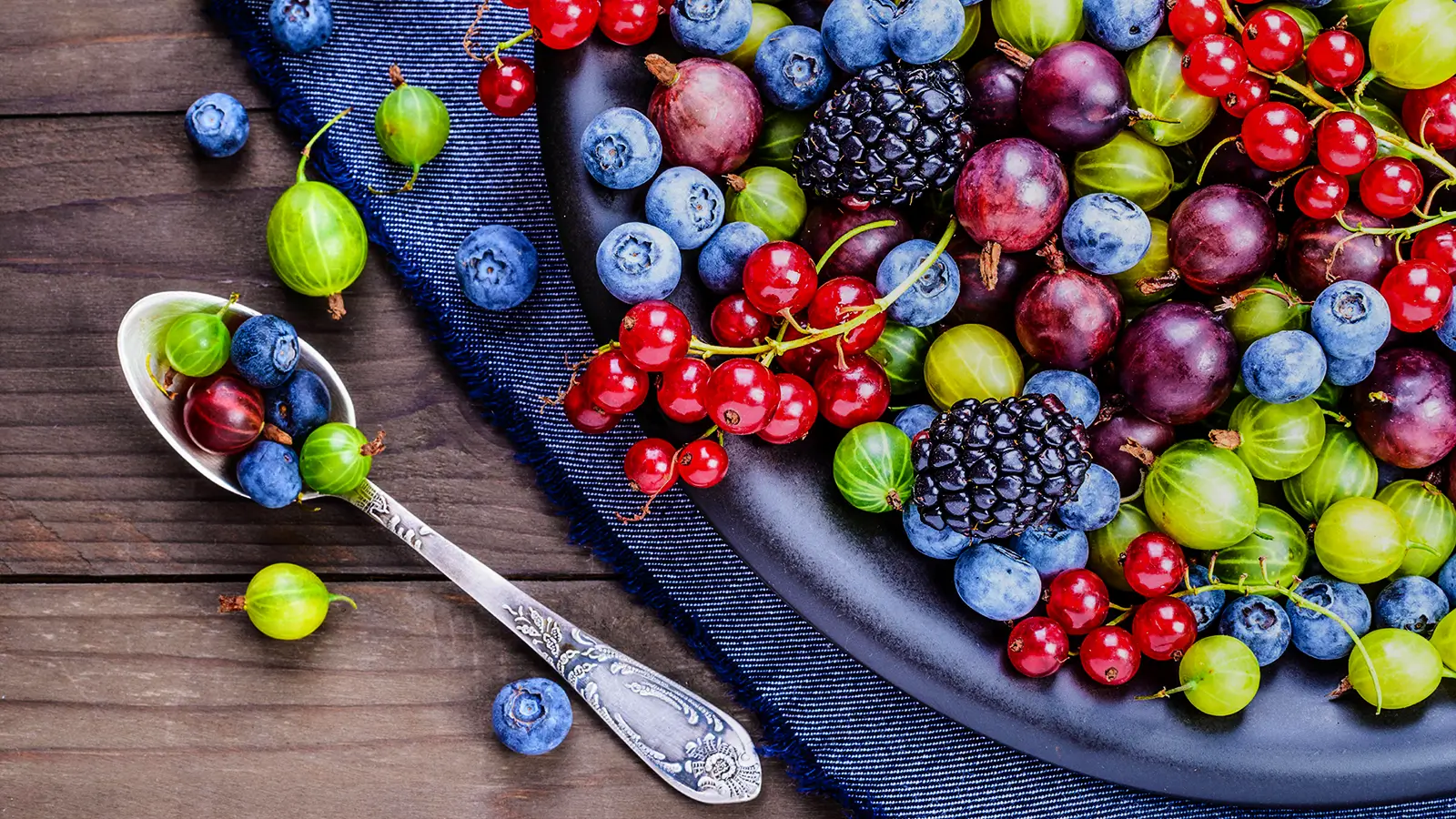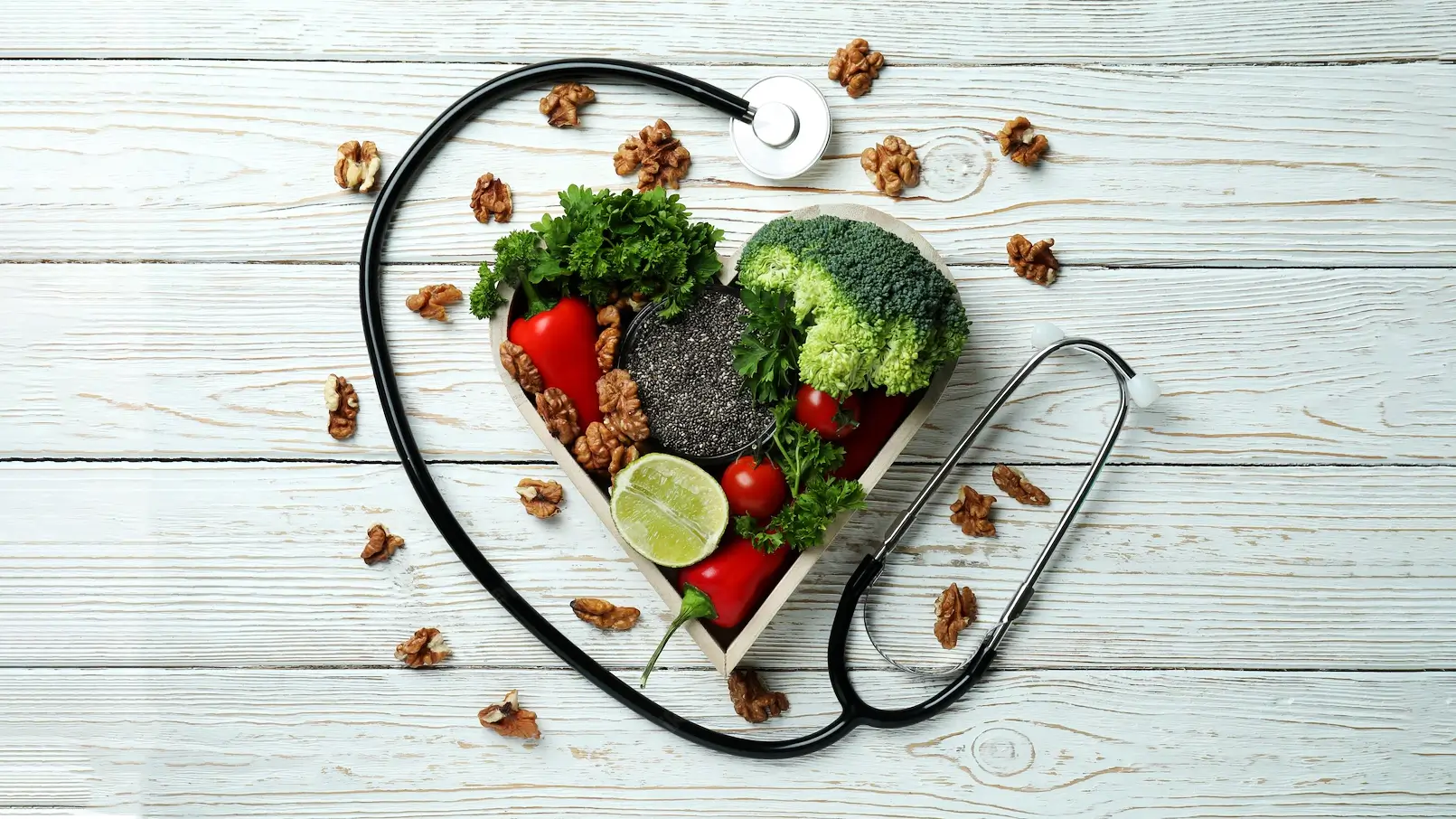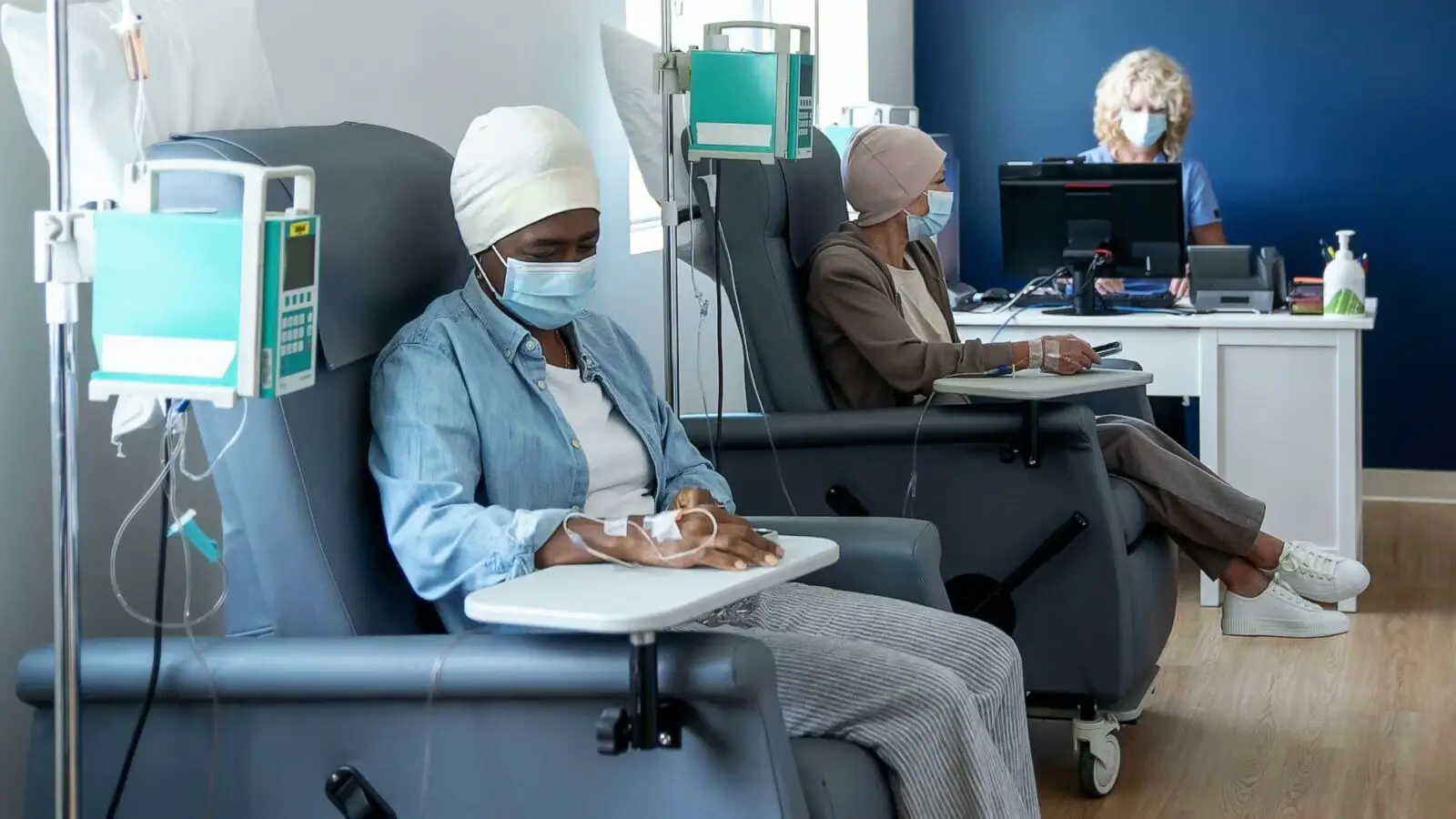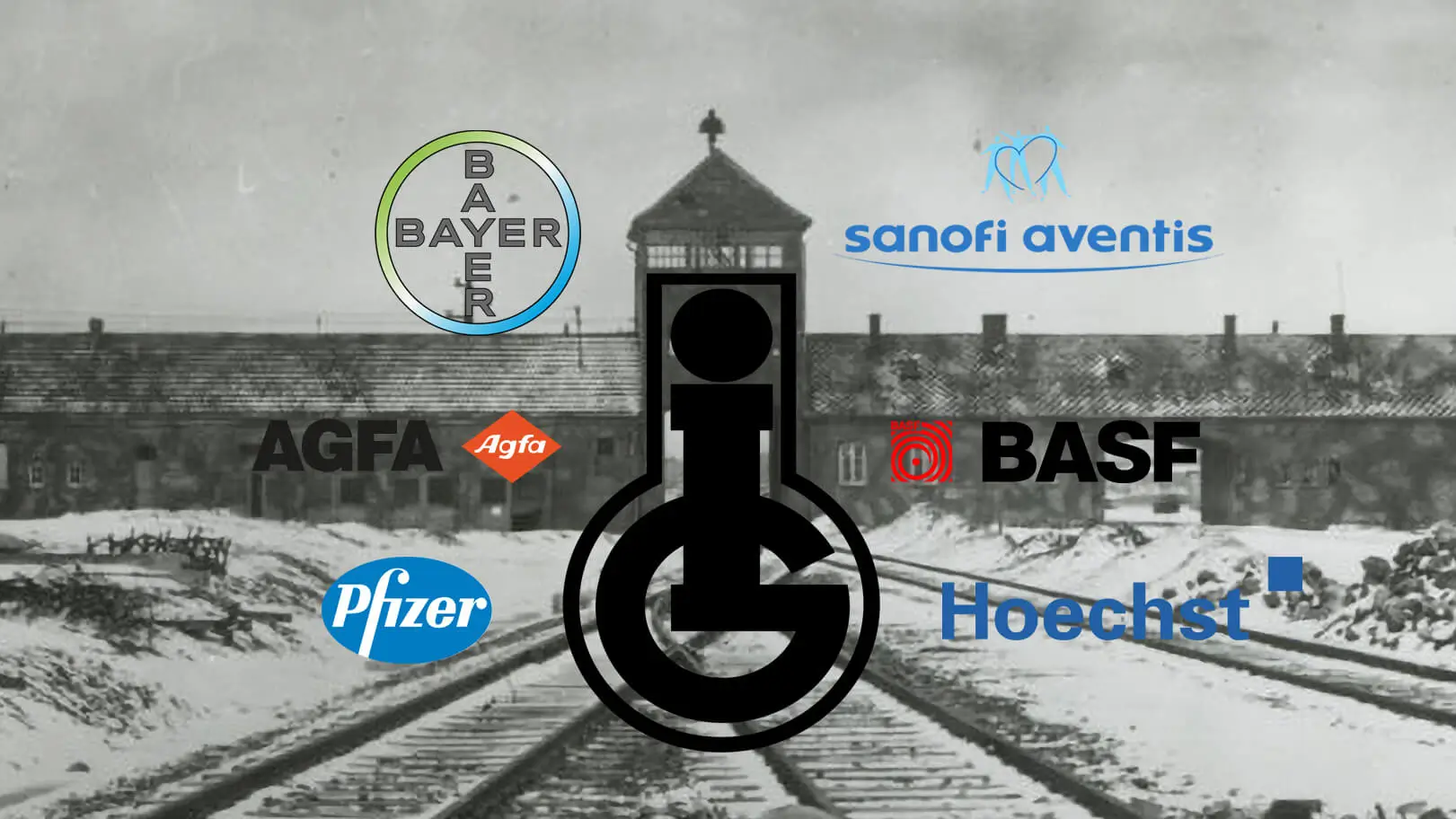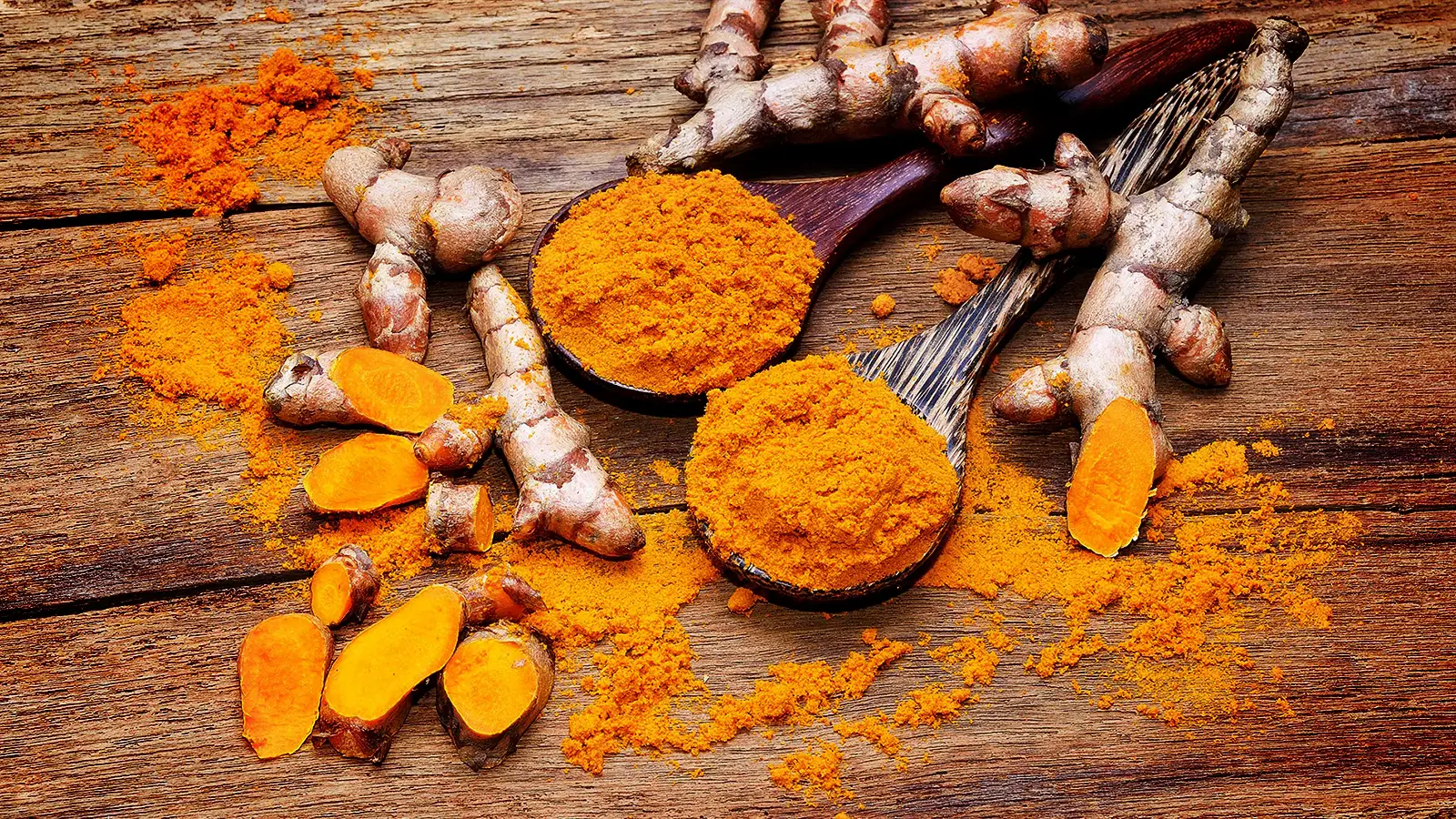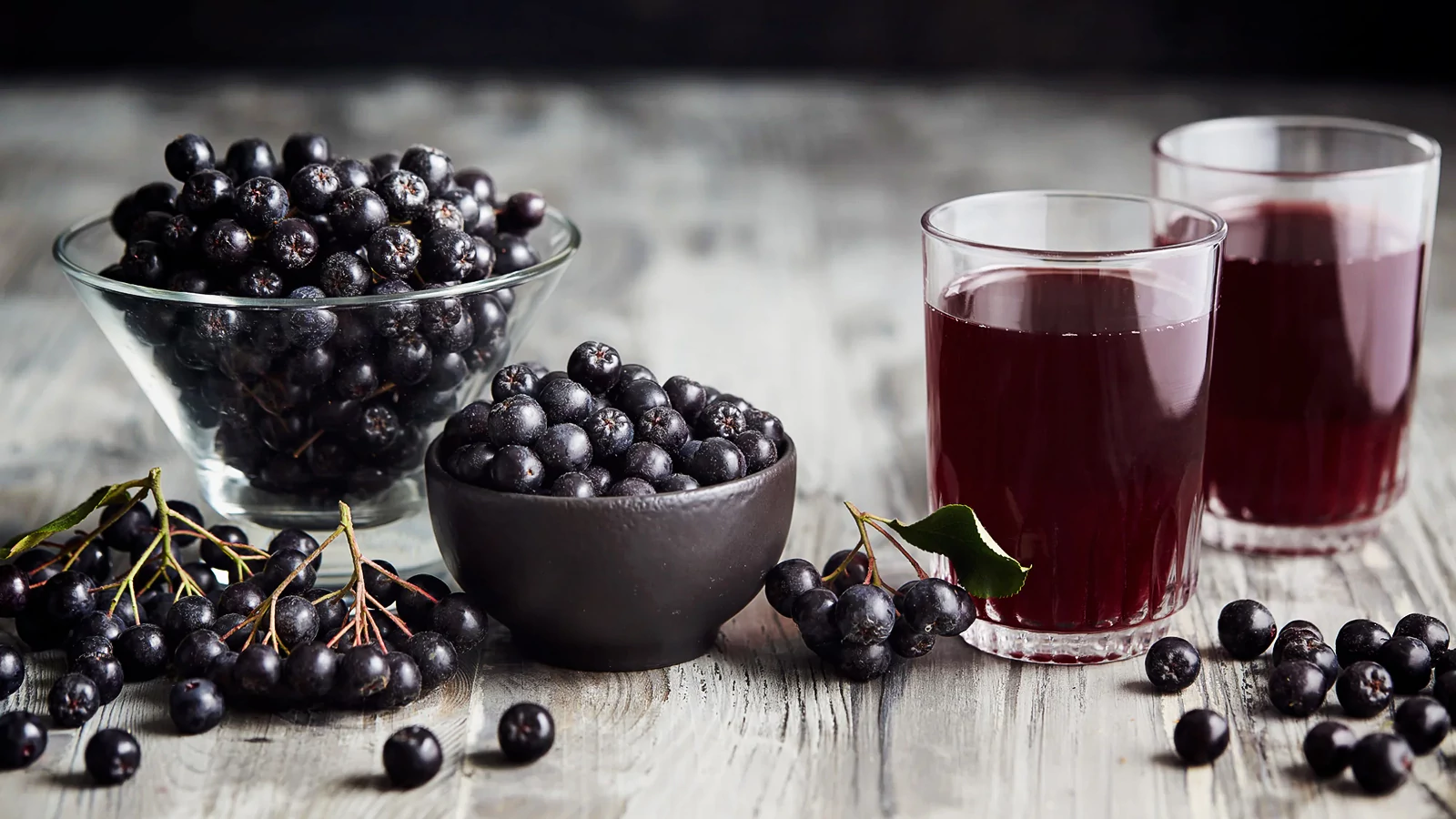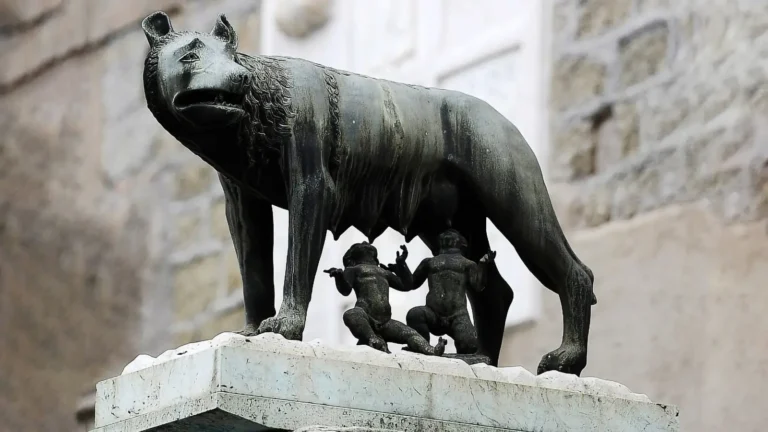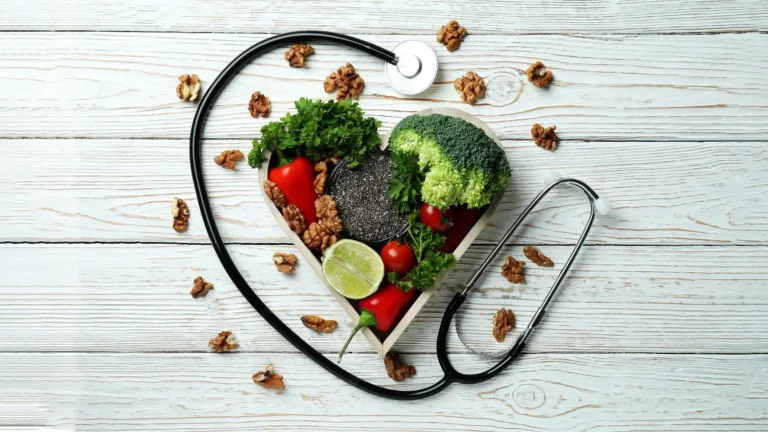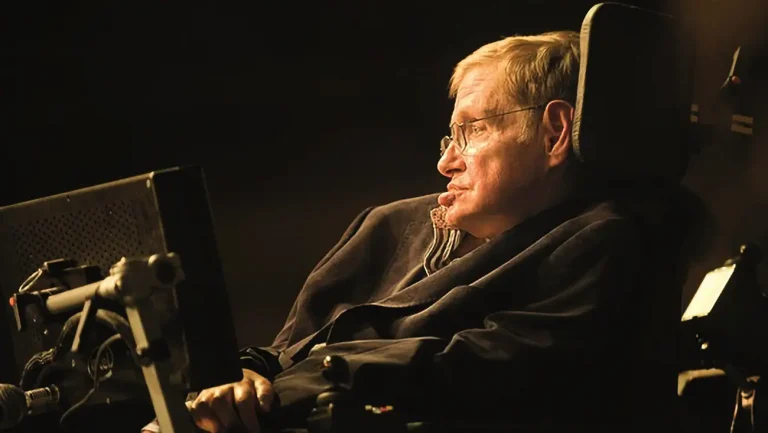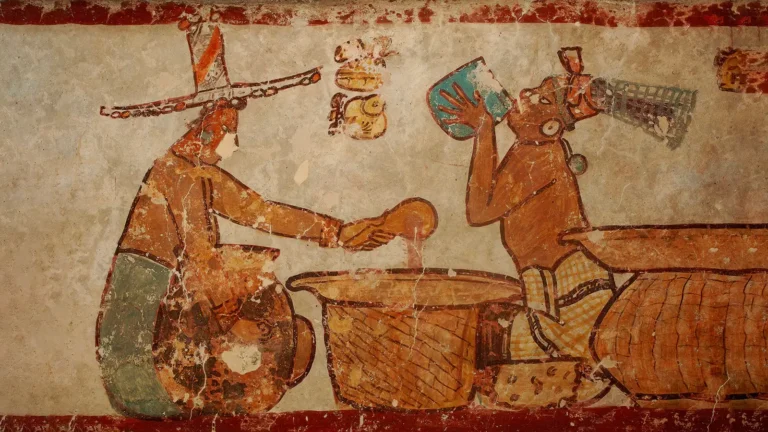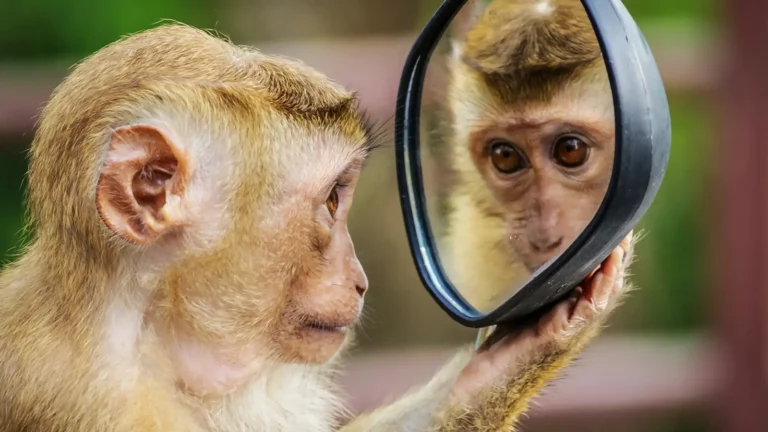Intravenous Vitamin C in the Treatment of Cancer: 40 Years of Evidence
Intravenous vitamin C is a non-toxic chemotherapeutic agent that can be given in conjunction with conventional cancer treatments and incorporated as a prevention and longevity protocol.
Milos Pokimica
Written By: Milos Pokimica
Medically Reviewed by: Dr. Xiùying Wáng, M.D.
Updated May 22, 2023More than 80 years ago, the biochemist Otto Warburg observed that cancer cells need more glucose and produce more lactate than regular cells. This process, also known as aerobic glycolysis or the Warburg effect, has been used to detect tumors in the therapeutic environment by using positron emission tomography (PET).
Several genetic studies revealed that this metabolic difference may be crucial for cancer survival and proliferation, even if the precise mechanism through which glucose reprogramming contributes to carcinogenesis is still unknown. As a result, inhibiting glycolysis may provide cancer patients with a more specialized course of treatment. At any time when research shows a difference between cancer and a normal cell, it is a sign of potential treatment. The difference is exactly what scientists are looking for in the first place. The way to selectively target only cancer cells without damaging normal cells.
Interestingly, it was shown to be the truth in this case as well. It turned out that GLUT1 not only transports glucose but also transports dehydroascorbic acid (DHA), the oxidized or reduced form of vitamin C.
The increased DHA uptake in mutant cells produced oxidative stress because intracellular DHA was quickly converted back to vitamin C at the expense of glutathione (GSH). Glutathione is one of the master antioxidants in cells. The enhanced DHA absorption in mutant cells led to oxidative stress, which raised the number of reactive oxygen species (ROS) in cells. In response, increased ROS activated the DNA repair enzyme poly (ADP-ribose) polymerase (PARP), which used a lot of cellular NAD+ as a cofactor. Glyceraldehyde 3-phosphate dehydrogenase (GAPDH) is inactive when NAD+ levels are low because GAPDH needs NAD+ as a cofactor. In highly glycolytic KRAS or BRAF mutant cells, blocking GAPDH finally caused an energy crisis and cell death that was not seen in the KRAS and BRAF wild-type cells.
While there is little doubt that KRAS and BRAF mutations are two of the most frequently mutated oncogenes in human cancer, they are not the only mutations that have been linked to altered glucose metabolism and sensitivity to ascorbate treatment. Renal cancer cells (RCC) lacking VHL (Von Hippel-Lindau), a tumor suppressor that weakens HIF1A by ubiquitination, are substantially more vulnerable to ascorbate therapy than VHL-proficient cells. Increased HIF1A transcriptional activity in RCC-VHL null cells leads to increased GLUT1 expression as well as the deregulation of several other glycolytic enzymes, which results in metabolic reprogramming.
Moreover, cancers with higher DNA damage levels, such as those that have undergone radiation therapy or those with BRCA gene mutations, are more dependent on DNA repair mediated by PARP. By depriving them of the NAD+ required for PARP activation, pharmacologic vitamin C might selectively target such cancers.
I have used this textbook’s scientific definitions here deliberately because there is still a large number of medical doctors that have a lot of questions and do not like antioxidants and always have something to add or debate.
Do cancer patients have compromised vitamin C status? Is IVC safe? Is intravenous vitamin C delivery the best method? Does IVC affect radiation or chemotherapy? Can IVC enhance the quality of life and lessen the severe side effects of chemotherapy? What are the IVC’s relevant mechanisms of action? What are the ideal IVC treatment dosages, frequency, and length? And so forth.
Since its discovery a century ago, the ideal vitamin C dosage needed to optimize its health benefits has been highly contested. The two-time Nobel Prize winner and world-renowned chemist Linus Pauling firmly believed that megadoses of vitamin C (more than 1 g taken daily) could prevent and treat a wide range of illnesses, including the common cold and cancer. Pauling’s assertion has, however, generally been disregarded or even mocked in modern allopathic medicine. This controversy is still very much alive today.
Over 60 years ago William McCormick, a Toronto physician, hypothesized that vitamin C may prevent cancer by boosting collagen production after seeing that cancer patients frequently came with very low levels of vitamin C in their blood and exhibited scurvy-like symptoms. Extending this notion, a Scottish surgeon named Ewan Cameron proposed in 1972 that ascorbate may prevent the growth of cancer by inhibiting the enzyme hyaluronidase which otherwise weakens the extracellular matrix and enables cancer to metastasize. He started treating cancer patients who were terminally ill, and he later published a case study of 50 patients in which some of the patients he treated benefited from a high dosage of vitamin C.
Encouraged by the result, Cameron teamed up with Linus Pauling to conduct clinical trials involving terminal cancer patients. In 1976, they published a study of 100 patients with terminal cancer treated with ascorbate. Their disease progression and survival rates were compared to 1000 retrospective control patients who were matched with the vitamin C-treated patients regarding age, sex, type of cancer, and clinical stage. The results showed that patients treated with vitamin C had increased quality of life and a four-fold increase in their mean survival time.
In a follow-up study by Cameron and Pauling, 22% of cancer patients who received vitamin C treatment lived for more than a year, compared to just 0.4% of control patients. Also, a clinical investigation conducted separately in Japan produced similar findings.
Today there are thousands of cases, and this is well documented, and there is a line of research in recent years on the anticancer effect of vitamin C. In one clinical case that I know a man had prostate cancer and a simple do-it-yourself oral vitamin C protocol. It was recommended to him by an “underground“ cancer treatment expert whose name I cannot use publicly. Initially, he reached bowel tolerance by taking 60 grams per day. After two months his tolerance was down to less than 30 grams per day. But now we have something that will go against the interests of the drug industry and if you read the second part of the book series you know what that means.
Back in the day, it all started with Linus Pauling. One man against the machine. Same as it was with Royal Raymond Rife or any other renowned scientist overnight he was discarded and named as a quack, renegade, delusional scientist and all other “names“ you can think of. It was a standard strategy of propaganda and slander of Big Pharma chemical banking cartels.
But in this case, as same as it was already once with Rife, there was a problem also. Linus Carl Pauling (1901-1994) was a physical chemist and father of biochemistry who won two Nobel Prize awards; one in chemistry in 1954, followed by a Nobel Peace Prize in 1962. He should have won the third Nobel as well but powers at be decided that that was not good for the business and gave it to Watson and Crick for “narrowly“ beating him to the discovery of the structure of DNA. The New Scientist magazine ranked him as one of the 20 greatest scientists to ever live. His laboratory could not be just burned down and he could not be just arrested or prosecuted as Rife was and all others.
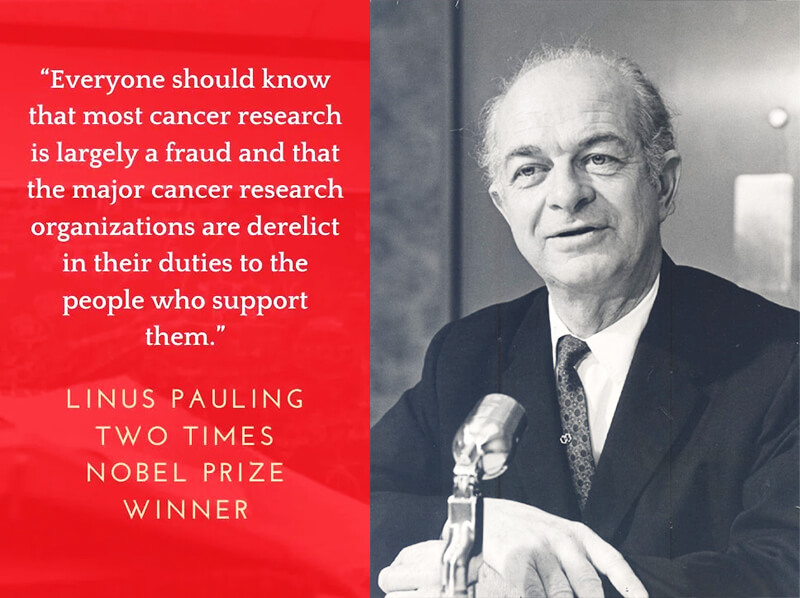
At one time he did research into vitamin C and understood the biochemistry behind the antioxidants and their ability to neutralize toxic substances, and free radicals and kill off viruses.
He wrote a book on the subject of vitamin C where he advocated mega-dosing to utilize vitamin C’s antioxidant potential to prevent the cold and because of his reputation, the book was a bestseller. Sales of vitamin C soared with Pauling’s endorsement. But he was naive. He was convinced that he had discovered a new cure for many illnesses and that medical professionals will be happy because they can heal people with something cheap and don’t need a prescription and that MDs won’t be wasting time anymore on people with common cold for which they didn’t have any treatment at that time anyway.
But he was wrong. Attacks were launched immediately. First, from Harvard and professor Frederic Stair called him an idiot that doesn’t know anything about nutrition and that he is not a physician but just a chemist and that he doesn’t know anything about what he is talking about in the area of nutrition. Pauling’s recommendation was a minimum of 6 grams per day and he was extrapolating at that time the amounts of vitamin C that was prescribed by a veterinary medicine for the primates in the zoos. He calculated the RDA for primates with their body weight and just recalculated and recommended the same amount to humans.
It was heresy. That was 200 times what was officially recommended. The real problem was the fear that this might actually work and that the medical professionals will be left without a big chunk of the prescription drugs income. Pauling was arguing that vitamin C as an antioxidant has the value of boosting the body’s natural defense mechanisms and can heal not just the common cold but a range of other diseases such as cancer and many others as well, and not just that. He argued that mega-dosing will increase longevity and quality of life. In allopathic (modern) medicine, if you have a “magical“ cure that heals every disease and gives you the longevity you are a quack. If you have two Nobels and are the ”father” of biochemistry, and you have such a substance that is also dirt cheap you are not just a quack, you are a threat.
Pauling next step hit the medical establishment right to the sacrosanct area of making money. He wrote a book based on medical records of patients that have been treated with high doses of vitamin C by the Scottish surgeon dr. Ewen Cameron. Both Cameron and Pauling claimed that antioxidants like vitamin C can stop the damage of DNA and prevent cancer and if patients already have one that vitamin C can prolong life with no side effects of chemotherapy. In 1966, Cameron published his first book, Hyaluronidase, and Cancer. In 1971, Cameron began corresponding with Dr. Linus Pauling and published Cancer and Vitamin C with Pauling in 1979. Pauling still not realizing the scope of corruption, took the data from his research and went to American National Cancer Institute. The response was that he is a quack and a danger to society and that he needs to stop his heresy and that they are not going to do any research.
Because they couldn’t silence him or make him go away, and because of the public awareness, the pressure was mounting and the Mayo Clinic decided to do research. The Mayo Clinic study was stopped after 75 days and was given low doses of oral not intravenous vitamin C and was designed in a way that Pauling consider a fraud. He wrote a series of letters to the medical journals claiming it to be a conspiracy. He was rebuffed and called a dangerous quack and actually both his own wife and dr. Cameron, both died from cancer. Pauling even after that didn’t give up his theory and still was promoting his antioxidant theory and had his own laboratory where he did research that exists to this day. It is Linus Pauling Institute near San Francisco that has around 40 scientific staff and to this day is financed by private benefactors inspired by the cause. They tested vitamin C on cholesterol and heart disease and published a series of papers on lowering the effects of vitamin C on cholesterol and more importantly on the oxidation of cholesterol. The medical branch just rejects all of his studies and that is that.
In the end who was right, was it all a conspiracy? The answer is yes, it was all a conspiracy to protect the model of business. Forty years later we now know exactly what oxidation does to the DNA and we know exactly what antioxidants and in this case vitamin C do. For example here is a study from 2015 from Singapore (Raymond et al., 2016) with a conclusion:
“Compared with chemotherapy, IVC therapy, in combination with a diet and supplement regimen, is tolerated well, appears to have antitumor activity in some cases, has been administered alongside conventional therapy without impairing response, is safe for most patients, and is inexpensive. It also appears to increase the quality of life for patients. IVC therapy has the potential to become an important chemotherapeutic method to combat cancer. This, however, can take place only through further research and clinical study.“
(Raymond et al., 2016)
So where are American National Cancer Institute and Mayo Clinic now to give these scientists the titles like quacks and senile megalomaniacs? Here are some quotes from the study:
“After IVC (intravenous vitamin C) treatment, P2 showed necrotic activity in his abnormal enlarged cervical lymph nodules that had not been removed by the previous radiotherapy. The invasive breast carcinoma in P7 disappeared after 6 months. Most remarkably, the tumor P8 had been afflicted with shrank by 49.3% in the first 21 days of intensive IVC therapy. This was followed by a 93% shrinkage after approximately 6 weeks. The patient was totally cleared 10 months later. P9 also showed remarkable tumor shrinkage. After the relapse of cancer in 2009, the patient did not seek conventional treatment and decided to solely focus on IVC therapy. For P9, his tumor also shrank from 11.3 × 10.7 × 7.5 to 7.1 × 6.6 × 6.0 cm3 for the whole duration of IVC therapy. On the other hand, when P5 stopped IVC therapy, her breast tumor growth started to worsen. Her tumor grew from 6 × 5.6 × 4.2 to 6.6 × 6 × 3.7 cm3 in a span of less than 5 months. When P5 initially started IVC therapy, her 3 tumors showed consistent results: shrinkage of 30% to 53%. These improvements in her tumor were seen in a span of 1 month. P5’s tumor growth only started to worsen after the removal of IVC therapy and illustrated the likelihood of tumor regression attributed to IVC therapy.“
(Raymond et al., 2016)
This study is just one example, by now there are hundreds of studies done on mega-dosing vitamin C but guess what, nobody will ever tell the patients this. Vitamin C is cheap, vitamin C cannot be patented and vitamin C is effective. And keep in mind that vitamin C is not, in reality, a very strong antioxidant. It is actually weak compared to some other available antioxidants but when you take a huge amount of it and inject it directly into the vein then you can compensate for its weak strength by giving a higher dose of it. And the body has the ability to urinate out the oxidized form of vitamin C because it is a water-soluble antioxidant with no problem and with no use of any enzymes in the process. The end effect will be the absorption of free electrons and neutralization of oxidative and other toxic agents inside the body. Everything that vitamin C was able to do, it was able to do because of its antioxidative properties. There is nothing unique that vitamin C has that other antioxidants do not have. They are all on a molecular level just electron donors, and that is it. For example, regular turmeric has proven to be an even more potent anti-cancer “drug” than IVC and most of the chemotherapy treatments on the market. Or how about just understanding the fact that cancer is a condition and not a disease and that it needs to have a holistic approach and not a reductionist approach pushed by allopathic medicine.
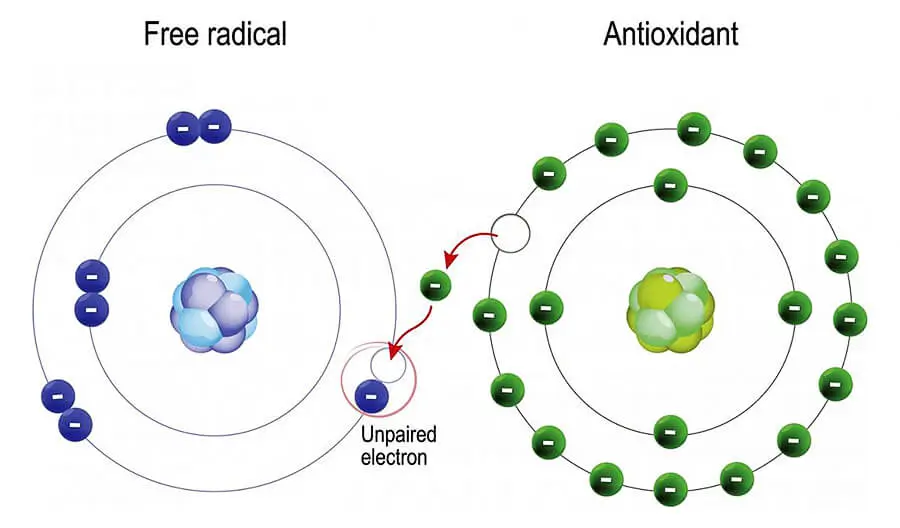
Luis Pauling was right because he understood the natural biochemical processes of antioxidants inside the body. He was ostracized and he was willing to take the risk and didn’t care about what corrupted clinics like Mayo do. He personally wanted his heresy to be his legacy not the title of father of biochemistry and molecular biology or Nobel prizes. He wanted to be remembered as a vitamin C man that brought to light the importance of antioxidants and revolution in human medicine.
Antioxidants do prevent DNA from damage and do prolong life and if you have less inflammation you will have less mutation and fewer cancer cells living inside you and you will have an immune system that is not overloaded with toxins that can actually kill off all of the cancer cells before they became the problem and not just that. Antioxidants and in particular vitamin C directly kill the cancer cells as well. Dr. Riordan carried out a 15-year-long research project called RECNAC (cancer spelled backward). His research in cell cultures showed that vitamin C was selectively cytotoxic against cancer cells. The mechanism for this is summarized by Dr. Hunninghake:
“Cancer cells were actively taking up vitamin C in a way that depleted tissue reserves. PET scans are commonly ordered by oncologists to evaluate their cancer patients for metastases (cancer spread to other organs).
What is actually injected into the patient at the start of the scan is radioactive glucose. Cancer cells… depend upon glucose as their primary source of metabolic fuel… [and] employ transport mechanisms called glucose transporters to actively pull in glucose.
In the vast majority of animals, vitamin C is synthesized from glucose in only four metabolic steps. Hence, the molecular shape of vitamin C is remarkably similar to glucose. Cancer cells will actively transport vitamin C into themselves, possibly because they mistake it for glucose. Another plausible explanation is that they are using vitamin C as an antioxidant. Regardless, vitamin C accumulates in cancer cells.
If large amounts of vitamin C are presented to cancer cells, large amounts will be absorbed. In these unusually large concentrations, the antioxidant vitamin C will start behaving as a pro-oxidant as it interacts with intracellular copper and iron. This chemical interaction produces small amounts of hydrogen peroxide.
Because cancer cells are relatively low in an intracellular anti-oxidant enzyme called catalase, the high dose vitamin C induction of peroxide will continue to build up until it eventually lyses the cancer cell from the inside out! This effectively makes high dose IVC a non-toxic chemotherapeutic agent that can be given in conjunction with conventional cancer treatments. “
Dr. Hunninghake
The Linus Pauling Institute at Oregon State University specializes in molecular nutrition research, with an emphasis on vitamins, minerals, and phytochemicals (plant-based chemicals). LPI was co-founded in 1973 by Linus Pauling. The institute’s current aim is to carry out rigorous scientific research and disseminate to the general public evidence-based health information on food and supplements.
References:
Passages selected from a book: Passages selected from a book: Pokimica, Milos. Go Vegan? Review of Science Part 3. Kindle ed., Amazon, 2020.
- Block G. (1991). Vitamin C and cancer prevention: the epidemiologic evidence. The American journal of clinical nutrition, 53(1 Suppl), 270S–282S. https://doi.org/10.1093/ajcn/53.1.270S
- Schoenfeld, J. D., Sibenaller, Z. A., Mapuskar, K. A., Wagner, B. A., Cramer-Morales, K. L., Furqan, M., Sandhu, S., Carlisle, T. L., Smith, M. C., Abu Hejleh, T., Berg, D. J., Zhang, J., Keech, J., Parekh, K. R., Bhatia, S., Monga, V., Bodeker, K. L., Ahmann, L., Vollstedt, S., Brown, H., … Allen, B. G. (2017). O2⋅- and H2O2-Mediated Disruption of Fe Metabolism Causes the Differential Susceptibility of NSCLC and GBM Cancer Cells to Pharmacological Ascorbate. Cancer cell, 31(4), 487–500.e8. https://doi.org/10.1016/j.ccell.2017.02.018
- Cimmino, L., Dolgalev, I., Wang, Y., Yoshimi, A., Martin, G. H., Wang, J., Ng, V., Xia, B., Witkowski, M. T., Mitchell-Flack, M., Grillo, I., Bakogianni, S., Ndiaye-Lobry, D., Martín, M. T., Guillamot, M., Banh, R. S., Xu, M., Figueroa, M. E., Dickins, R. A., Abdel-Wahab, O., … Aifantis, I. (2017). Restoration of TET2 Function Blocks Aberrant Self-Renewal and Leukemia Progression. Cell, 170(6), 1079–1095.e20. https://doi.org/10.1016/j.cell.2017.07.032
- Raymond, Y. C., Glenda, C. S., & Meng, L. K. (2016). Effects of High Doses of Vitamin C on Cancer Patients in Singapore: Nine Cases. Integrative cancer therapies, 15(2), 197–204. https://doi.org/10.1177/1534735415622010
- Moertel, C. G., Fleming, T. R., Creagan, E. T., Rubin, J., O’Connell, M. J., & Ames, M. M. (1985). High-dose vitamin C versus placebo in the treatment of patients with advanced cancer who have had no prior chemotherapy. A randomized double-blind comparison. The New England journal of medicine, 312(3), 137–141. https://doi.org/10.1056/NEJM198501173120301
- Verrax, J., & Calderon, P. B. (2008). The controversial place of vitamin C in cancer treatment. Biochemical pharmacology, 76(12), 1644–1652. https://doi.org/10.1016/j.bcp.2008.09.024
- Parrow, N. L., Leshin, J. A., & Levine, M. (2013). Parenteral Ascorbate As a Cancer Therapeutic: A Reassessment Based on Pharmacokinetics. Antioxidants & Redox Signaling, 19(17), 2141-2156. https://doi.org/10.1089/ars.2013.5372
- Levine, M., Espey, M. G., & Chen, Q. (2009). Losing and finding a way at C: New promise for pharmacologic ascorbate in cancer treatment. Free radical biology & medicine, 47(1), 27. https://doi.org/10.1016/j.freeradbiomed.2009.04.001
- Ohno, S., Ohno, Y., Suzuki, N., Soma, G., & Inoue, M. (2009). High-dose vitamin C (ascorbic acid) therapy in the treatment of patients with advanced cancer. Anticancer research, 29(3), 809–815. [PubMed]
- Hoffer, L. J., Robitaille, L., Zakarian, R., Melnychuk, D., Kavan, P., Agulnik, J., Cohen, V., Small, D., & Miller, W. H., Jr (2015). High-dose intravenous vitamin C combined with cytotoxic chemotherapy in patients with advanced cancer: a phase I-II clinical trial. PloS one, 10(4), e0120228. https://doi.org/10.1371/journal.pone.0120228
- Creagan, E. T., & Moertel, C. (1979). Vitamin C therapy of advanced cancer. The New England journal of medicine, 301(25), 1399. https://doi.org/10.1056/nejm197912203012517
- Padayatty, S. J., & Levine, M. (2000). Reevaluation of ascorbate in cancer treatment: emerging evidence, open minds and serendipity. Journal of the American College of Nutrition, 19(4), 423–425. https://doi.org/10.1080/07315724.2000.10718941
- Wilson, M. K., Baguley, B. C., Wall, C., Jameson, M. B., & Findlay, M. P. (2014). Review of high-dose intravenous vitamin C as an anticancer agent. Asia-Pacific journal of clinical oncology, 10(1), 22–37. https://doi.org/10.1111/ajco.12173
- Cameron, E., & Pauling, L. (1976). Supplemental ascorbate in the supportive treatment of cancer: Prolongation of survival times in terminal human cancer. Proceedings of the National Academy of Sciences of the United States of America, 73(10), 3685–3689. https://doi.org/10.1073/pnas.73.10.3685
Related Posts
Do you have any questions about nutrition and health?
I would love to hear from you and answer them in my next post. I appreciate your input and opinion and I look forward to hearing from you soon. I also invite you to follow us on Facebook, Instagram, and Pinterest for more diet, nutrition, and health content. You can leave a comment there and connect with other health enthusiasts, share your tips and experiences, and get support and encouragement from our team and community.
I hope that this post was informative and enjoyable for you and that you are prepared to apply the insights you learned. If you found this post helpful, please share it with your friends and family who might also benefit from it. You never know who might need some guidance and support on their health journey.
– You Might Also Like –

Learn About Nutrition
Milos Pokimica is a doctor of natural medicine, clinical nutritionist, medical health and nutrition writer, and nutritional science advisor. Author of the book series Go Vegan? Review of Science, he also operates the natural health website GoVeganWay.com
Medical Disclaimer
GoVeganWay.com brings you reviews of the latest nutrition and health-related research. The information provided represents the personal opinion of the author and is not intended nor implied to be a substitute for professional medical advice, diagnosis, or treatment. The information provided is for informational purposes only and is not intended to serve as a substitute for the consultation, diagnosis, and/or medical treatment of a qualified physician or healthcare provider.NEVER DISREGARD PROFESSIONAL MEDICAL ADVICE OR DELAY SEEKING MEDICAL TREATMENT BECAUSE OF SOMETHING YOU HAVE READ ON OR ACCESSED THROUGH GoVeganWay.com
NEVER APPLY ANY LIFESTYLE CHANGES OR ANY CHANGES AT ALL AS A CONSEQUENCE OF SOMETHING YOU HAVE READ IN GoVeganWay.com BEFORE CONSULTING LICENCED MEDICAL PRACTITIONER.
In the event of a medical emergency, call a doctor or 911 immediately. GoVeganWay.com does not recommend or endorse any specific groups, organizations, tests, physicians, products, procedures, opinions, or other information that may be mentioned inside.
Editor Picks –
Milos Pokimica is a health and nutrition writer and nutritional science advisor. Author of the book series Go Vegan? Review of Science, he also operates the natural health website GoVeganWay.com
Latest Articles –
Top Health News — ScienceDaily
- Indoor tanning triples melanoma risk and seeds broad DNA mutationson December 15, 2025
Researchers discovered that tanning beds cause widespread, mutation-laden DNA damage across almost all skin, explaining the sharply increased melanoma risk. Single-cell genomic analysis revealed dangerous mutations even in sun-protected regions. Survivors’ stories underscore how early tanning habits have lifelong consequences. The findings push for stricter policies and clear public warnings.
- Researchers identify viral suspects that could be fueling long COVIDon December 15, 2025
Scientists are uncovering a new possibility behind long COVID’s stubborn symptoms: hidden infections that awaken or emerge alongside SARS-CoV-2. Evidence is mounting that viruses like Epstein-Barr and even latent tuberculosis may flare up when COVID disrupts the immune system, creating lingering fatigue, brain fog, and other debilitating issues.
- Harvard gut discovery could change how we treat obesity and diabeteson December 14, 2025
Scientists found that certain molecules made by gut bacteria travel to the liver and help control how the body uses energy. These molecules change depending on diet, genetics, and shifts in the microbiome. Some even improved insulin response in liver cells when tested in the lab. The findings could open the door to new ways of preventing or managing obesity and diabetes.
- A grad student’s wild idea triggers a major aging breakthroughon December 14, 2025
Senescent “zombie” cells are linked to aging and multiple diseases, but spotting them in living tissue has been notoriously difficult. Researchers at Mayo Clinic have now taken an inventive leap by using aptamers—tiny, shape-shifting DNA molecules—to selectively tag these elusive cells. The project began as an offbeat conversation between two graduate students and quickly evolved into a collaborative, cross-lab effort that uncovered aptamers capable of binding to unique surface proteins […]
- Natural compound supercharges treatment for aggressive leukemiaon December 14, 2025
Forskolin, a plant-derived compound, shows surprising potential against one of the most aggressive forms of leukemia. Researchers discovered that it not only stops cancer cells from growing but also makes them far more vulnerable to chemotherapy by preventing them from pumping out the drugs meant to kill them. Experts say this dual action could help create safer, more powerful AML treatments with fewer harsh side effects.
- AI finds a hidden stress signal inside routine CT scanson December 14, 2025
Researchers used a deep learning AI model to uncover the first imaging-based biomarker of chronic stress by measuring adrenal gland volume on routine CT scans. This new metric, the Adrenal Volume Index, correlates strongly with cortisol levels, allostatic load, perceived stress, and even long-term cardiovascular outcomes, including heart failure risk.
- Tea may strengthen bones in older women while heavy coffee weakens themon December 13, 2025
A decade-long study of older women found that tea drinkers had slightly stronger bones, while moderate coffee drinking caused no harm. Heavy coffee intake—over five cups a day—was linked to lower bone density, especially in women who consumed more alcohol. Tea’s benefits may stem from catechins that support bone formation. The researchers say small daily habits could make a meaningful difference over time.
PubMed, #vegan-diet –
- Healthful and Unhealthful Plant-Based Diets and Their Association with Cardiometabolic Targets in Women Diagnosed with Breast Cancer: A Cross-Sectional Analysis of a Lifestyle Trialon December 11, 2025
CONCLUSIONS: Maintaining cardiometabolic risk factors within normal ranges is clinically relevant in BCS, and this may be more likely when a plant-based diet is consumed, especially if low in unhealthy plant foods.
- Dietary and Lifestyle Patterns and Their Associations with Cardiovascular and Inflammatory Biomarkers in Vegans, Vegetarians, Pescatarians, and Omnivores: A Cross-Sectional Studyon December 11, 2025
Background: Plant-based diets are associated with reduced cardiometabolic risk, yet the influence of lifestyle behaviors on these benefits remains insufficiently understood. Objective: To assess the combined impact of dietary patterns and lifestyle behaviors on body composition, lipid profiles, and inflammatory biomarkers in healthy young adults. Methods: In this cross-sectional study, 155 participants aged 18-39 years were categorized into four dietary groups: vegans (n = 48), vegetarians (n […]
- Functional and Nutritional Properties of Lion’s Mane Mushrooms in Oat-Based Desserts for Dysphagia and Healthy Ageingon December 11, 2025
Hericium erinaceus (Lion’s Mane mushroom) is a medicinal species recognised for its neuroprotective and antioxidant properties. This study investigated its potential as a functional ingredient in oat milk-based desserts formulated for individuals with dysphagia. Freeze-dried Lion’s Mane powder (LMP), containing high-quality protein (~16%, amino acid score 88%), dietary fibre (~31%), and phenolic compounds (72.15 mg GAE/g), was incorporated at varying levels using gelatin or iota-carrageenan […]
- “A football team with no midfield”: A qualitative analysis of anti-vegan stigma in Italyon December 7, 2025
A growing body of research has demonstrated the prevalence of unfavourable attitudes towards individuals who adhere to a vegan diet and has provided empirical evidence to support the existence of an anti-vegan ideology. The present study aims to contribute to extant knowledge by examining the social perception of veganism and vegans in Italy. Italy is a nation characterised by a traditional culture of food that serves as a significant catalyst for collective identification and national pride….
- Plant-based dietary index on the Mediterranean and a vegan diet: a secondary analysis of a randomized, cross-over trialon December 5, 2025
CONCLUSION: These findings suggest that, replacing animal products even with the “unhealthful” plant-based foods on a vegan diet was associated with weight loss.
Random Posts –
Featured Posts –
Latest from PubMed, #plant-based diet –
- Identification of effective plant-based oils for use in aquafeed: An evaluation of impact on gamete quality and developmental success using zebrafish (Danio rerio) as a screening organismby Seyed-Mohammadreza Samaee on December 14, 2025
To evaluate the effectiveness of zebrafish as a screening system for identifying appropriate plant oils (POs) for aquafeed, Artemia nauplii (AN) were enriched with three single- cultivar olive oils (OO): Koroneiki, Parseh, and Arghavan. The resulting AN (ANKor, ANPar, ANArg, and AN36 [36 h starved AN, control]) were then fed to 360 fish (3.5 cm) for one month. The fatty acid (FA) profile of the AN was reflected in the ova and influenced both sperm motility and density, which in turn affected […]
- The Effect of Dietary Interventions on Human Vascular Function in the Context of Acute Psychological Stress: A Scoping Reviewby Rosalind Baynham on December 14, 2025
Episodes of acute psychological stress increase the risk for cardiovascular diseases, partially through stress-induced impairments in vascular function. During psychologically stressful periods, individuals are more likely to consume unhealthy foods and fewer fruits and vegetables. Yet, the impact of dietary choices and their nutritional composition on vascular function in the context of psychological stress is unclear. In this scoping review, comprehensive database searches were carried out […]
- Plant-based diets, gut microbiota, blood metabolome, and risk of colorectal, liver and pancreatic cancers: results from a large prospective cohort study of predominantly low-income Americansby Fangcheng Yuan on December 14, 2025
CONCLUSIONS: A diet high in healthy plant foods and low in animal foods was inversely associated with liver cancer risk and with CRC risk among screening-naïve participants. These associations may be partly mediated through gut microbiota and systemic metabolism.
- Vegetarian diet and likelihood of becoming centenarians in Chinese adults aged 80 years or older: a nested case-control studyby Yaqi Li on December 14, 2025
CONCLUSIONS: Targeting individuals of advanced age (80+ years) in China, we found that individuals following vegetarian diet had lower likelihood of becoming centenarians relative to omnivores, underscoring the importance of a balanced high-quality diet with animal- and plant-derived food composition for exceptional longevity, especially in the underweight oldest-old.
- Priority of nutrition and exercise in depression management: triangulating mini-review of past and recent evidence with clinical practice guidelinesby Shannon Rogers on December 14, 2025
CONCLUSIONS: Disparities that exist in leading depression management guidelines vis-à-vis inclusion of evidence-informed nutrition and PA/PE recommendations, warrant reconciliation. Evidence supporting anti-depressant WFPB nutrition and limiting pro-inflammatory animal-sourced food and UPF and supporting anti-inflammatory aerobic exercise and resistance training warrants being translated into national/international depression management guidelines as consistently as recommendations for…
- The effect of a diet based on vegetable and dairy protein on biochemical and functional indicators of sarcopenia in patients with liver cirrhosis: a randomized controlled trialby Mahdiyeh Taghizadeh on December 13, 2025
CONCLUSIONS: In conclusion, a vegetable and dairy protein-based diet effectively inhibited significant elevations in ammonia levels compared to the standard diet in persons with liver cirrhosis; however, anthropometric parameters and muscle function did not differ between two groups.


